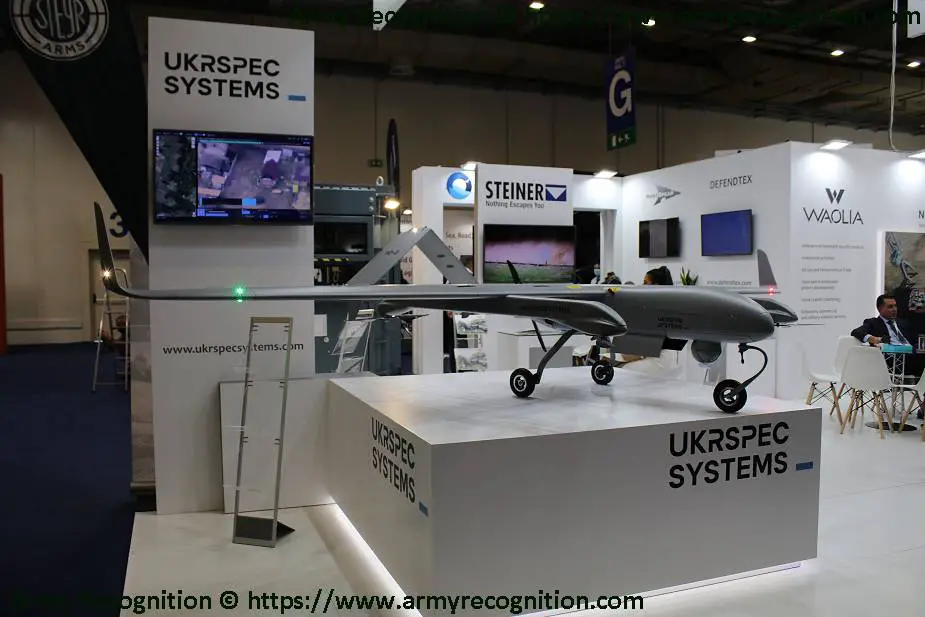Ukrainian company UKRSPECSYSTEMS has developed the PD-2, a new generation of modular vertical takeoff and landing unmanned aerial vehicle that is displayed at DEFEA 2021, International defense exhibition in Greece.

UKRSPECSYSTEMS from Ukraine exhibits its PD-2, a modular vertical takeoff and landing Unmanned Aerial System at DEFEA 2021, International Defense Exhibition in Greece. (Picture source Army Recognition)
While developing PD-2 UAS UKRSPECSYSTEMS team pursued a simple goal, to develop an efficient and versatile solution that may be operated in any environment or weather conditions, consumables and spare parts should be available worldwide, the configuration of the system should be changed within minutes to fit mission requirements as well as production time and export procedures should be reasonable.
The airframe of the PD-2 can be easily configured as a VTOL (Vertical Take-Off and Landing) fixed-wing UAS (Unmanned Aerial System) or as a conventional fixed-wing aircraft with or without chassis. Rapidly change airframe configuration on-the-go wherever you are within 15 minutes. No tools are required. You can change take-off and landing methods, wingspan, endurance, MTOW, payload weight.
The PD-2 is powered by a 4-stroke carburetor gasoline engine and can reach a maximum flight speed of 140 km/h. It has a maximum take-off weight of 55 kg and an endurance of 8 hours.
The PD-2 is a multi-purpose UAS. Modular construction and flexibility allow changing the payload on the go depending upon mission tasks. PD-2 UAV is capable of cargo delivery in different ways: dropdown via fuselage/wing modules or even landing the drone for load/unload and further take-off. Cargo delivery may be executed by command or at a predetermined point.
Control and communication are vital for the mission's success. While designing PD-2 UAS our team did its best to ensure the capability of working under different circumstances. This affects not only the weather conditions, but relief complexity and the communication channel preferred for mission success, depending upon various factors.
Standard communication configuration contains a line of sight ground control station, using radio connection. It has two datalinks (the main one, used for video and telemetry exchange within 200+ km range, and backup one, for telemetry only), with the feature of automatic hopping between them in case of GNSS or signal loss and AES-256 encryption.
The ground control station has two laptops for easy integration wherever you need (truck, container, etc). If the relief is flat and open it’s enough to use quadropod, once the mission faces difficult terrain motorized mast comes in hand. Ground control station automatically enables frequency hopping in case of GNSS or signal loss. Moreover, there’s advanced software that ensures the features mentioned above work perfectly on the go with no human intervention.














